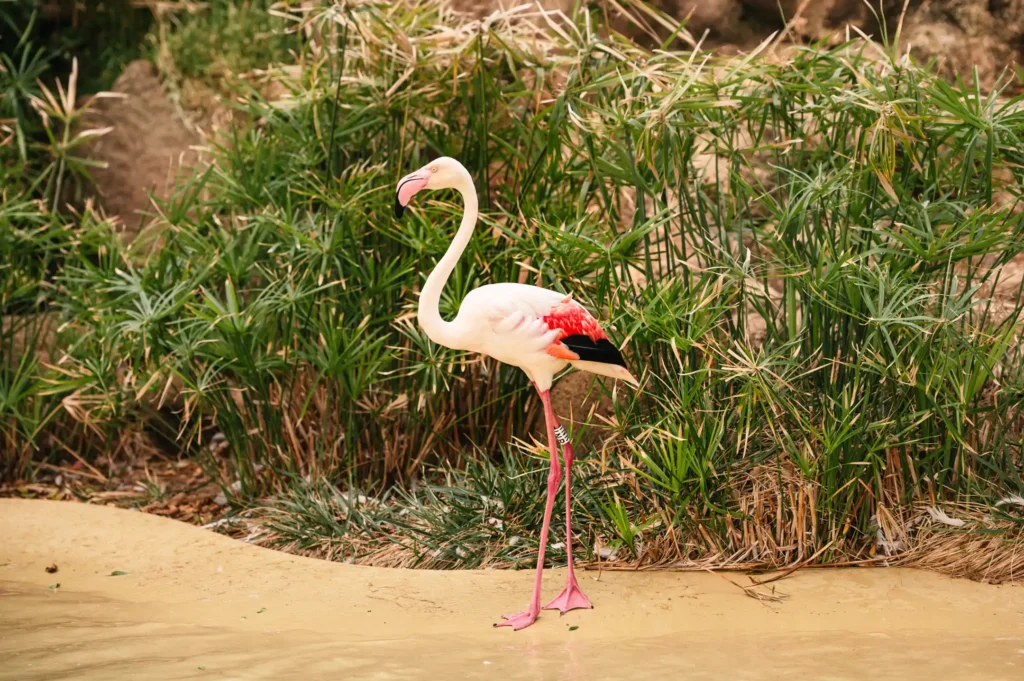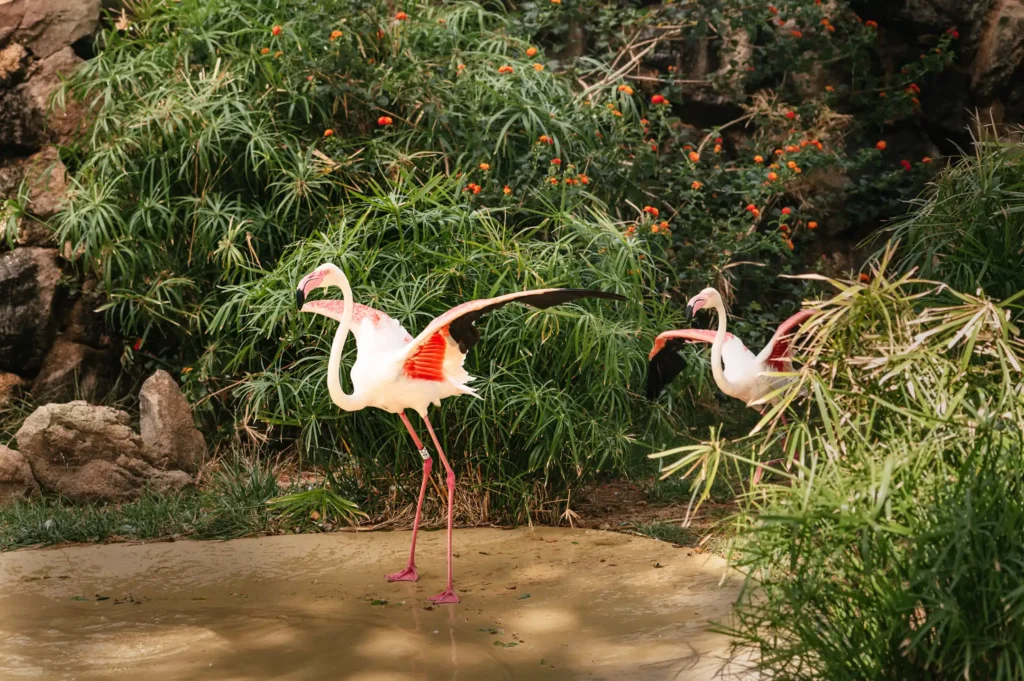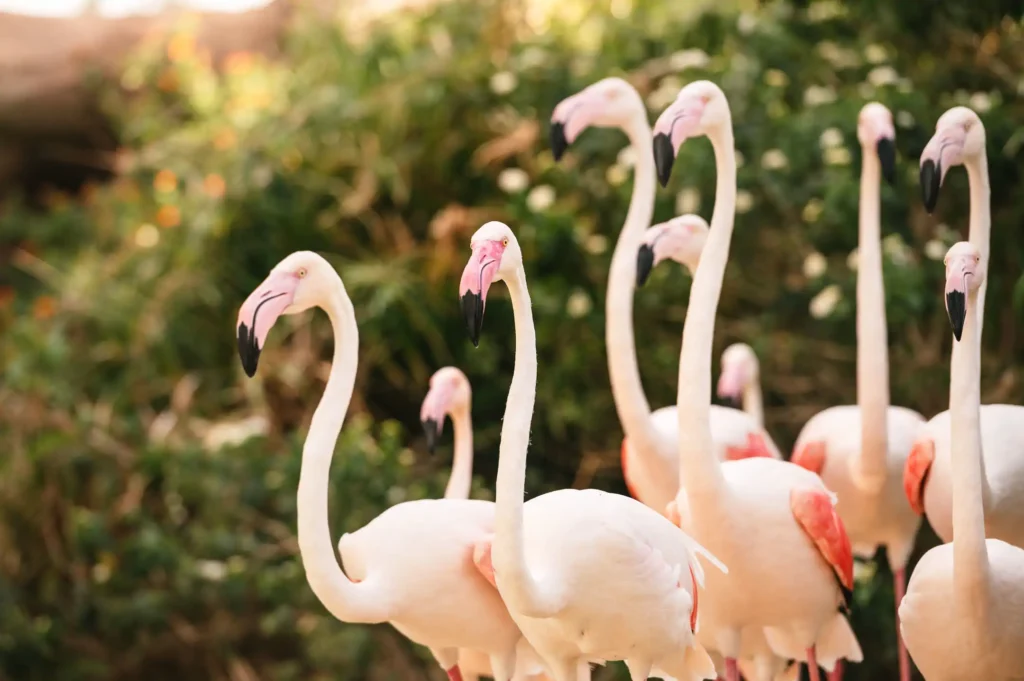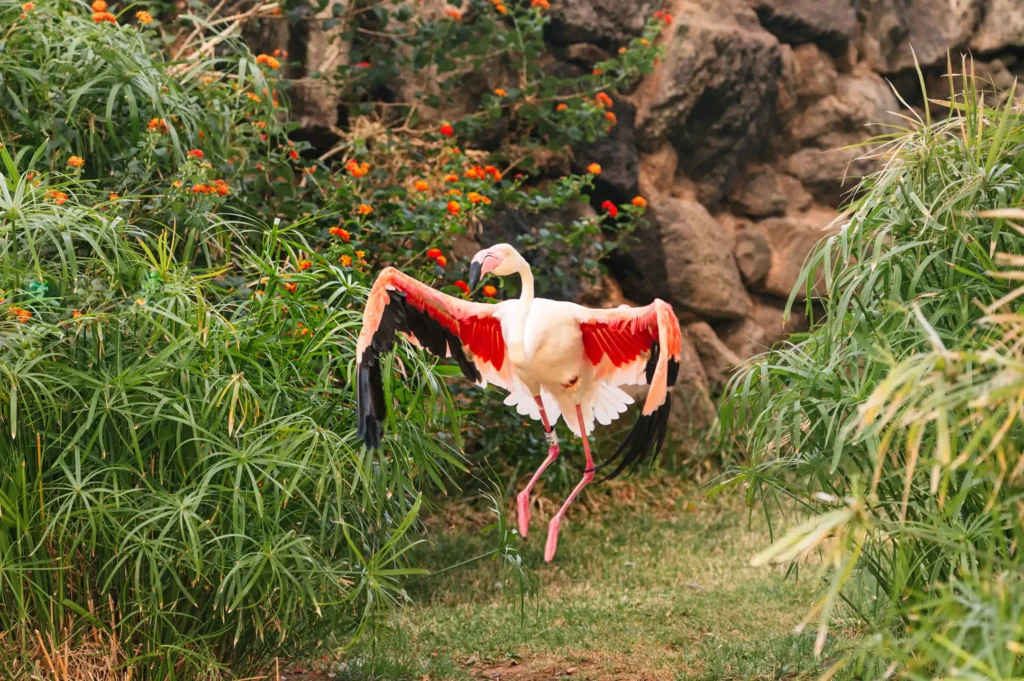The largest of all flamingos and the most widely distributed worldwide.
Physical features
Long legs, a long neck and colourful feathers ranging from pale pink to orange on the overts and black on the tail feathers are the striking characteristics that define this unique bird.
Its length reaches 145cm with a wingspan of 170cm, weighing between 2kg and 4kg, making it the largest flamingo species.
Another peculiar characteristic of these birds is their long, curved and black. tipped bill.
Habitat
They use to wade through shallow, waterlogged areas such as coastal lagoons, marshes, etc.
Greater Flamingos have a very large distribution area and they are found in Asia (Turkey, India, etc.), in Africa (coastal areas of North and West Africa) and in southern Europe, particularly on the coasts of Spain, Italy, Cyprus, etc.
Some of these populations are not permanent and change according to migrations.
Diet
Flamingos have a very distinctive feeding method that involves submerging their head upside down in the water and then stirring the bottom with their beak, thus raising particles of microalgae, small crustaceans, protozoa, etc. They then suck water into their mouths with their tongues and separate food from water thanks to the hairy structures that line the flamingo’s large tongue.
The colour of their feathers comes from some of their food, such as microalgae and small crustaceans, which contains a high content of carotenoids. The more of this chemical they eat, the stronger the colour of their feathers.
Reproduction
They perform very colourful courtships with synchronized movements of the whole group until they form a pair with strong bonds, which is normally definitive.
They reproduce annually and lay a single egg in a nest made by them in volcano-shaped mud mounds up to 50cm high.
Incubation lasts about 30 days and after the chicks hatch, nurseries are created where all the chicks remain together but each parent is able to differentiate its chick from all the others in order to feed it.
Behaviour
They are gregarious birds that normally maintain their colonies, but if the weather conditions in the area are adverse, they migrate in search of friendlier climates.
Migrations, in addition to the climate, also depend to a large extent on the age of the individuals, with adults being more likely to stay in one area than young animals that tend to migrate in search of land to form new colonies.
Threats
The main threat to these birds is the destruction of their habitat and the disturbance of their homes by humans with noise and crowds near their colonies.
Status and conservation
It is an endangered species and is therefore included in Appendix II of the CITES Convention.
Listed as “Of Special Interest” in the national catalogue of endangered species.
Classified as Least Concern (LC) in the IUCN Red List.





